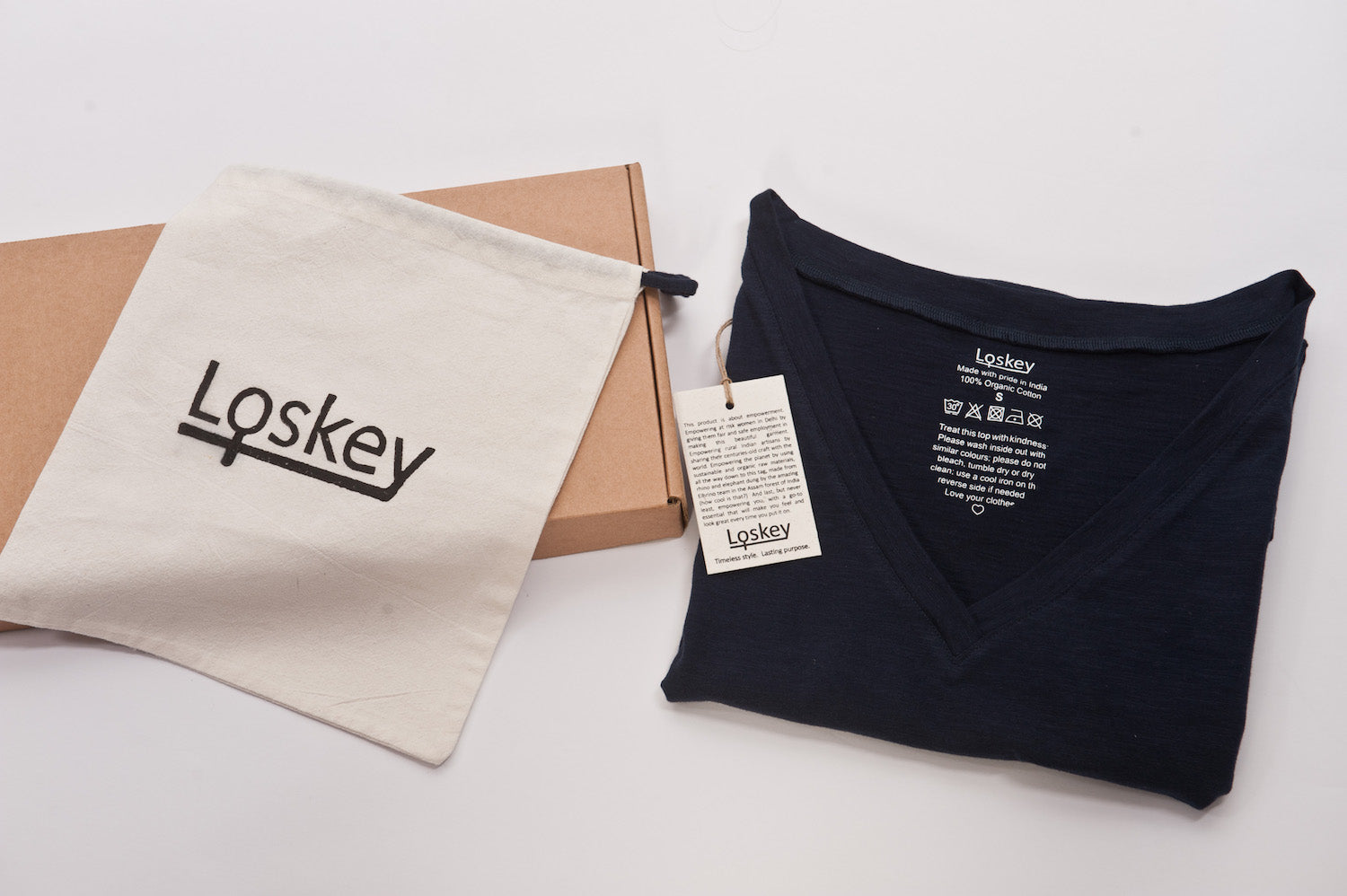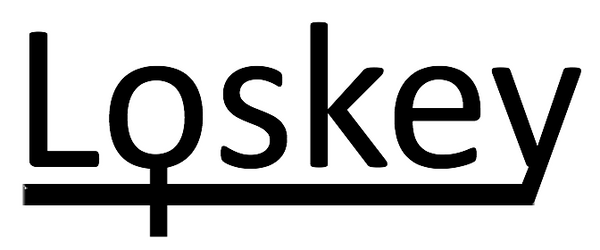
Why Loskey is Committed to Sustainability
Those of you who have been following the story of Loskey will know that the inspiration for the brand was driven by my desire to drive international development through the economic empowerment of women. That ambition remains at the core of Loskey’s purpose, but soon after commencing the journey from concept to brand, I understood that sustainability also had to be one of our core guiding principles. I also realised how little I really knew about the impact that fashion has on our planet.
While I was at the research stage of Loskey, I uncovered some startling facts. The first that fashion is one of the largest polluting industries in the world. There have been many claims, most famously by Eileen Fisher in 2015, that it is, in fact, the second most polluting industry after oil. However, detailed quantitative research demonstrates that fashion is merely the 5th largest industrial polluter in the world. Did that make me feel better? Well, here’s the list of the top 4:
- Electricity and heat
- Agriculture
- Road transportation
- Oil and gas
How could the clothes on our back be destroying our planet to such an extent? Digging deeper, I learned that there were three key factors driving this shocking reality: the use of toxins in production and dyes, the rise of the phenomenon known as ‘fast fashion’ and the alarming effects on our water supply from some man-made materials.
Toxic chemicals
I love vibrant colours, but what I didn’t realise is that textile dyeing is the largest polluter of clean water, after agriculture. The impact of these chemicals on the environment has been compounded over the last few decades by high-street brands looking to push out fashion hot off the catwalk, quickly and cheaply, but not necessarily safely. Costs are critical to this endless cycle, and therefore corners are often cut resulting in harmful chemicals being used in the production of what we wear.
Fast Fashion
The impact of ‘fast fashion’ doesn’t end with the chemicals that are often used in the dyeing of fabric and raw materials, but in the massive accumulation of ‘disposable’ clothing itself. I was shocked to learn that globally we now consume 80 billion new pieces of clothing per year, which represents a 400% increase over the last few decades. But I couldn’t claim that I had not personally been a contributor to this phenomenon – I liked to shop. This obsession with wearing, and then discarding, the latest fashion trends has led to a physical accumulation of clothing which cannot be recycled or safely disposed of given the chemicals used in its production. I knew my own closet was bursting at the seams but didn’t realise that the planet as a whole is also running out of space.
Fabric Production
And what are all of these clothes made from? Cotton represents about 20% of all material in clothing production. However, 90% of that cotton is genetically modified, accounting for 18% of pesticide use and 25% insecticide use globally. But the story gets worse when looking at the most commonly used man-made fabric – polyester. When polyester is washed in domestic washing machines it releases small microfibres. These particles are too small to be filtered before being released into the water supply, but, because they are made from plastic, they do not biodegrade. Small creatures such as plankton end up eating these microfibres, and thus they get passed up the food chain. While there is thankfully increasing awareness and action being taken on plastic use, the impact of plastic consumption on marine life and the health of our oceans is not yet fully known, nor the impact on humans and other animals that consume these organisms.

When you add it all up, it is no surprise that fashion is having a seismic impact on our planet. From the very production of the raw materials to the conspicuous consumption of ‘fast fashion,’ there has been a multiplier effect with dire consequences. If Loskey were to achieve its core purpose of international development, it could only do so if it were fully sustainable. But what did that mean exactly?
Organic cotton and dyes
It was clear that all of our tees had to be free of toxins and plastics. That meant only one possibility – 100% certified organic cotton. The move to organic cotton production is not new, and the Global Organic Textile Standard was established in 2002 as a means to certify that cotton was truly organic. The standard has been continually updated and now guarantees that any fabric that is GOTS-certified has a minimum of 70% organic fibres and that all dyes used in the production process meet environmental criteria. We are proud to use only GOTS-certified organic cotton in all of our Loskey tees.
Collateral and Packaging
However, it was clear that we couldn’t stop there – we had to do everything we could to ensure that everything involved with the production and distribution process was not causing a negative environmental impact. We were thrilled when our supply partner, Sonica Sarna, introduced us to Elrhino paper for our hang tags and thank you cards. Elhrino’s paper is made from the fibrous dung of Elephants and Rhinos in the Assam forest of India, and is therefore 100% sustainable (trees only hugged, not harmed!) Not only that, but the production of the paper employs and empowers the indigenous population, and a portion of the proceeds is invested in the protection of the endangered Great One-Horned Rhino. Elhrino paper’s impact on the environment is, therefore, net positive, and we are thrilled to be partnered with them!
We always knew we wanted to make packaging pouches for our tees. This was part of our core mission of economic empowerment – to work with the amazing women of Sonica Sarna’s #projecthrive for the production of our pouches and totes. However, we were also keen to ensure that the inevitable material wastage from the t-shirt manufacturing process was minimised. Therefore, the ties in these pouches are made from the offcuts of the tees.
Finally, as a direct to consumer business, we had to consider how we were going to send our tees to our customers – throwing it all in a plastic pouch to ship was clearly not the answer! We were also keen that our customers could receive their Loskey tees as efficiently as possible. So we were thrilled to find a partner that could manufacturer letterbox packaging for us made from 100% recycled cardboard. Not only that, but the box is re-sealable and thus reusable for returns (hopefully not!) or other customer packaging needs.
Clothes for keeps
The final piece of our sustainability commitment is the tees themselves. They had to be the antithesis of fast fashion – not disposable clothes that get tossed after a few wears. In fact, that was one of my original inspirations – to create a t-shirt that would last not just beyond a few wears and washes, but ultimately for years. By using GOTS-certified organic cotton, we ensure that our raw material is produced in the best possible way. When it comes to the creation of our cotton jersey, we have also ensured that the cotton has a weight – grams per square metre (GSM) – that is best for long-term wear. All of our tees are 180 GSM, which we believe is the ideal weight for both drape and durability, and creates a timeless tee that can be worn again and again.
Loskey – a sustainable brand
So now you know that our mission doesn’t end with the economic empowerment of women – it merely begins there. We are committed to sustainability across the entire supply chain of our tee production, starting with our GOTS-certified organic cotton, and ultimately finishing with our high quality, timeless tees. We believe that fashion should not be fast. Like so many things, it is so much better when it is slow.
 Facebook
Facebook Twitter
Twitter Instagram
Instagram

